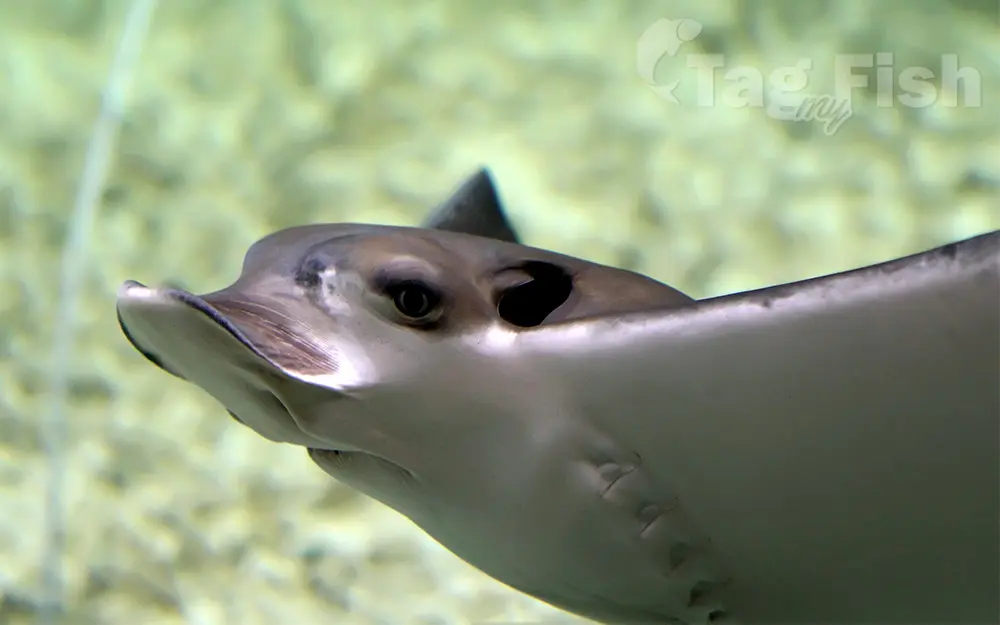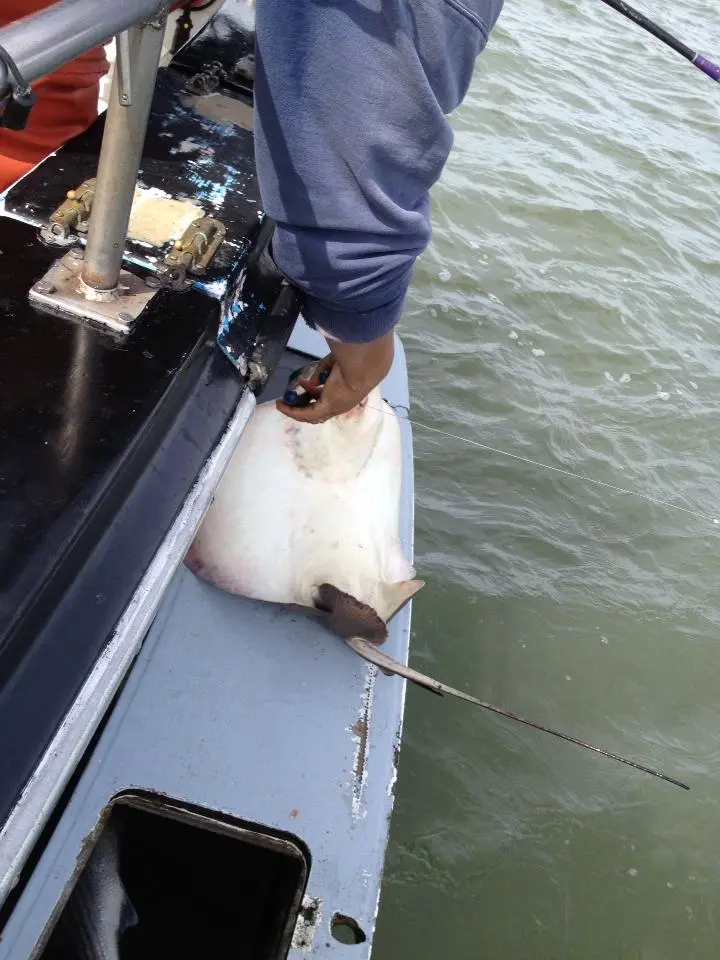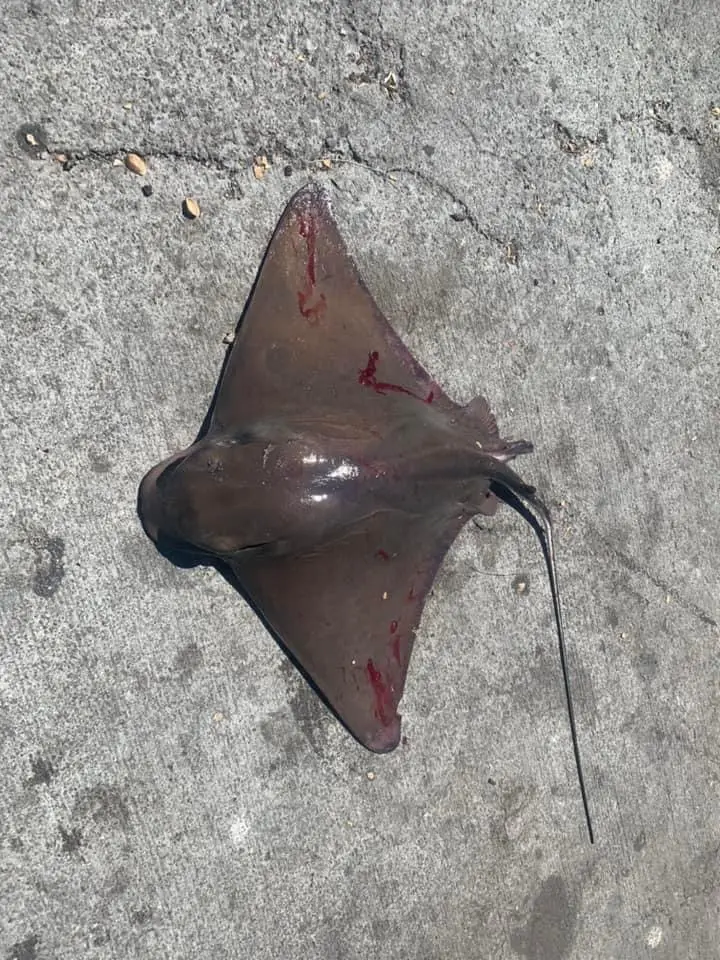Bat ray (Myliobatis californica)Follow

General data
- Main name: Bat ray
- Climates: Subtropical
- Habitat: Saltwater
- Native: North America
- Distribution: Pacific Ocean, Gulf of California
Classification
- Genus: Myliobatis - Myliobatis
- Family: Myliobatidae - Eagle ray
- Order: Myliobatiformes - Stingrays
- Class: Elasmobranchii - Sharks and Rays
- Superclass: Chondrichthyes - Cartilaginous fishes
Description
The bat ray (Myliobatis californica) is an eagle ray found in muddy or sandy sloughs, estuaries and bays, kelp beds and rocky-bottomed shoreline in the eastern Pacific Ocean, between the Oregon coast and the Gulf of California. It is also found in the area around the Galápagos Islands. The largest specimens can grow to a wingspan of 1.8 m (5 ft 11 in) and a mass of 91 kg (201 lb). They more typically range from 9–13 kg (20.0–30.0 lb). The size of the bat ray is dependent on many factors, such as habitat alterations, different oceanographic and environmental conditions. Bat rays have one to three venomous barbed spines at the base of its tail. Some bat rays are solitary while others form schools numbering in the thousands.




